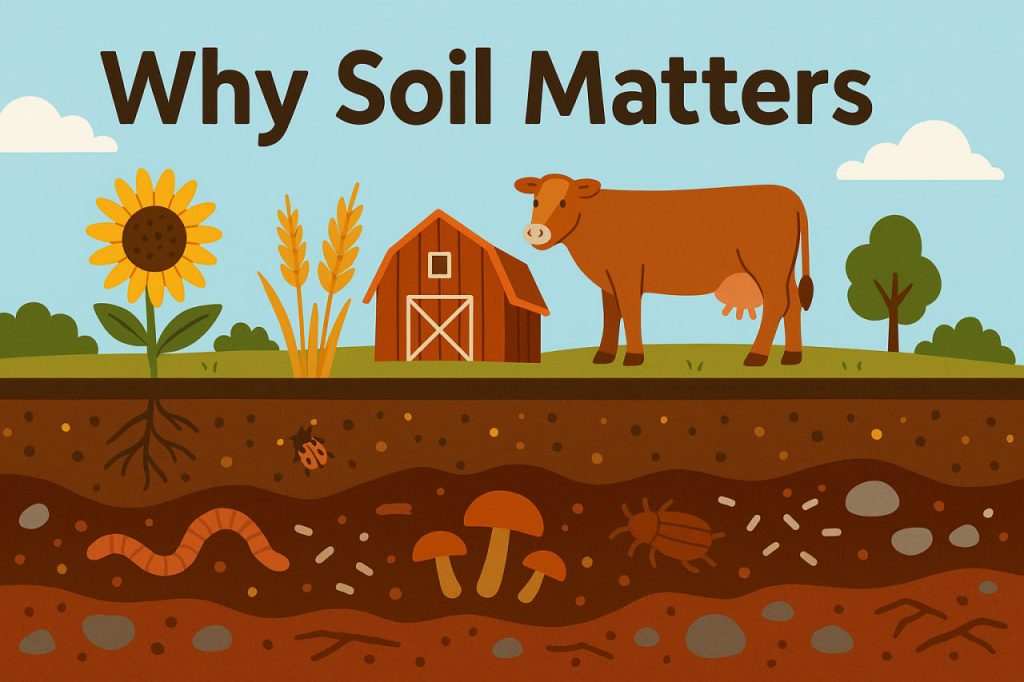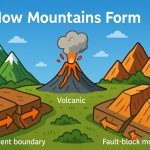Soil is more than just “dirt” under our feet—it’s a living, dynamic system essential to life on Earth. From growing crops to filtering water and storing carbon, soil plays a central role in maintaining healthy ecosystems and supporting human survival.
What Is Soil Made Of?
Soil is a mixture of:
- Minerals (like sand, silt, and clay)
- Organic matter from dead plants and animals
- Water and air
- Countless microorganisms like bacteria, fungi, and tiny insects
This complex combination supports plant growth and forms the base of most food chains on land.
How Soil Supports Life
Soil provides essential services that make life on Earth possible:
- Plants anchor in soil and draw nutrients from it to grow.
- Animals depend on plants—and many also live directly in the soil.
- Soil helps filter water, removing pollutants before it reaches underground aquifers.
- It plays a major role in the carbon cycle, storing carbon and helping regulate the climate.
- Healthy soil supports biodiversity, from earthworms to microscopic life forms.
Without fertile soil, agriculture would be impossible, and most land ecosystems would collapse.
Types of Soil and Their Uses
There are many types of soil, each suited for different uses:
- Sandy soil drains quickly and is easy to cultivate but holds little water.
- Clay soil retains moisture and nutrients but can become waterlogged.
- Loamy soil is ideal for farming—it’s well-balanced, rich in nutrients, and holds moisture well.
- Peaty and silty soils are good for specific crops and wetland environments.
Understanding soil types helps farmers, gardeners, and builders make smart decisions about land use.
Threats to Soil Health
Despite its importance, soil is under threat around the world. Major issues include:
- Erosion from wind and water, which strips away topsoil
- Deforestation and urban expansion, which destroy soil ecosystems
- Overuse of chemicals, like pesticides and fertilizers, that harm soil microbes
- Pollution from waste, mining, and industry
- Climate change, which affects moisture and nutrient balance
When soil is degraded, it loses its ability to support crops, store carbon, and hold water—leading to food shortages, desertification, and environmental damage.
How to Protect Soil
Protecting soil means protecting our future. Some key strategies include:
- Practicing sustainable farming, like crop rotation and organic methods
- Planting trees and ground cover to prevent erosion
- Reducing chemical use and improving composting
- Avoiding soil compaction by managing livestock and heavy machinery
- Supporting policies and programs that promote soil conservation
Even small actions like composting at home or planting native vegetation help improve local soil health.
Glossary
- Organic matter – Material from dead plants and animals that enriches the soil.
- Erosion – The process of soil being worn away by wind or water.
- Carbon cycle – The movement of carbon through the Earth’s atmosphere, oceans, plants, and soil.
- Topsoil – The uppermost layer of soil, rich in nutrients and essential for plant growth.
- Loamy soil – A balanced, fertile soil ideal for farming.


